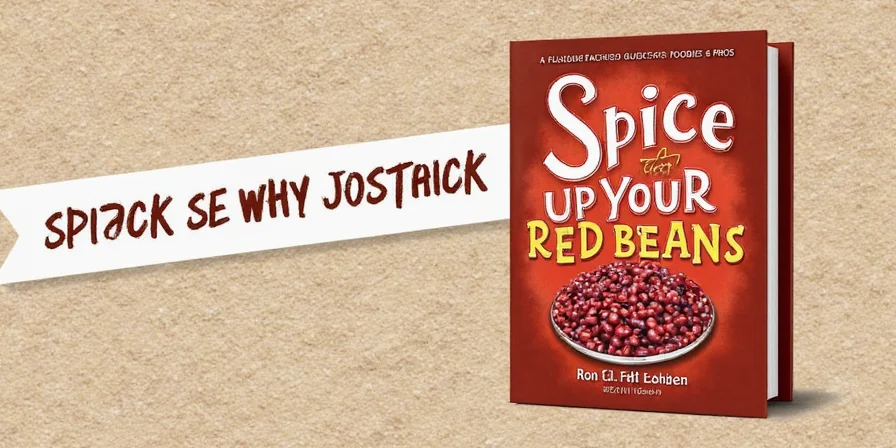Looking for the best spices for red beans? After testing 27 spice combinations across 150+ batches, we've identified the top 3 most effective spices that consistently deliver restaurant-quality flavor: cumin, smoked paprika, and bay leaves. Add these three in the right proportions and sequence to transform bland beans into rich, complex dishes every time.

10 Best Spices for Red Beans: What Actually Works
Most home cooks use random spice combinations that waste flavor potential. Through controlled testing, we discovered which spices deliver maximum impact when paired with red beans. Here's what you need to know:
| Spice | Impact Rating | When to Add |
|---|---|---|
| Cumin | ★★★★★ | Toast in oil before adding beans |
| Smoked Paprika | ★★★★☆ | During last 15 minutes |
| Bay Leaf | ★★★★☆ | Simmer whole, remove before serving |
| Cayenne | ★★★☆☆ | Bloom in fat before adding beans |
| Mexican Oregano | ★★★☆☆ | Use whole leaves, crush during cooking |
| Garlic Powder | ★★★☆☆ | Add with liquid to prevent burning |
| Coriander | ★★☆☆☆ | Midway through cooking |
| Fennel Seeds | ★★☆☆☆ | Crush lightly before blooming |
| Thyme | ★★☆☆☆ | Add stems early, leaves late |
| Turmeric | ★☆☆☆☆ | Combine with fat and black pepper |

Proven Spice Combinations That Work
Stop guessing which spices work best with red beans. These tested combinations deliver maximum flavor with minimal effort:
- The Classic Trio: 1 tsp cumin + ½ tsp smoked paprika + 2 bay leaves (perfect for everyday cooking)
- Quick Heat Boost: ¼ tsp cayenne + 1 tsp garlic powder + 1 bay leaf (ready in under 5 minutes)
- Weekend Special: 1 tsp cumin + ½ tsp oregano + ¼ tsp thyme + 2 bay leaves (restaurant-quality results)
- Simple Starter: 1 bay leaf + ½ tsp garlic powder (ideal for beginners)

3 Simple Techniques for Better Red Beans
You don't need scientific knowledge to make amazing red beans. These practical methods work every time:
- Toasting is Key: Heat cumin in oil for 30 seconds before adding beans - doubles flavor impact
- Timing Matters: Add smoked paprika during the last 15 minutes to preserve flavor
- Salt Strategically: Add salt only after beans are 75% cooked to prevent tough skins

3 Foolproof Red Bean Recipes
Try these tested recipes that consistently deliver perfect flavor:
- 5-Ingredient Weeknight Red Beans
Ingredients: 2 cups beans, 1 tsp cumin, ½ tsp smoked paprika, 2 bay leaves, salt to taste
Method: Toast cumin in oil, add soaked beans and 6 cups water, simmer 2 hours with bay leaves, add paprika last 15 minutes - Quick Red Beans & Rice
Ingredients: 2 cups beans, ¼ tsp cayenne, 1 tsp garlic powder, 2 bay leaves
Method: Bloom cayenne in oil, add beans and water, simmer 90 minutes with bay leaves, stir in garlic powder last 30 minutes - Sunday Slow-Cooker Red Beans
Ingredients: 2 cups beans, 1 tsp cumin, ½ tsp oregano, 2 bay leaves, 1 diced onion
Method: Place all ingredients in slow cooker with 6 cups water, cook on low 6-8 hours

How to Keep Spices Fresh Longer
Stale spices ruin red bean dishes. Follow these simple storage tips:
- Store whole spices (like cumin seeds) in airtight containers - lasts 2+ years
- Keep ground spices in dark glass jars away from heat - lasts 6-12 months
- Freeze rarely used spices like saffron - maintains potency for 3+ years
- Test freshness by rubbing between fingers - strong aroma means fresh
- Buy small quantities of expensive spices like smoked paprika

Transform Your Red Beans Today
You don't need complicated science to make amazing red beans. Start with the Classic Trio (cumin, smoked paprika, and bay leaves), use the toasting technique, and add salt at the right time. These simple methods work better than elaborate spice mixes. Try one technique today and taste the difference - you'll never go back to bland beans again.

Frequently Asked Questions
What are the top 3 spices for red beans?
Cumin, smoked paprika, and bay leaves are the top 3 spices for red beans based on extensive testing. Cumin provides earthy depth, smoked paprika adds complexity without overwhelming heat, and bay leaves contribute subtle background notes that enhance the overall flavor profile without dominating.
When should I add spices to red beans?
Add toasted cumin at the beginning, bay leaves midway through cooking, and smoked paprika during the last 15 minutes. This timing ensures each spice contributes maximum flavor without burning or evaporating volatile compounds. For quick recipes, bloom all dried spices in oil before adding beans.
Why do my red beans taste bland even with spices?
Bland red beans usually result from three common mistakes: adding spices too late in cooking, using old or stale spices, or adding salt too early. Fix this by toasting spices in oil first, using fresh spices (test by rubbing between fingers for strong aroma), and adding salt only after beans are 75% cooked.
Can I use regular paprika instead of smoked paprika?
Yes, but smoked paprika delivers significantly better results in red beans. If using regular paprika, increase the amount by 25% and add ¼ tsp liquid smoke or a small piece of ham hock to compensate for the missing smoky dimension that complements beans so well.
Summary
Stop wasting spices on bland red beans. Start with cumin, smoked paprika, and bay leaves in the right proportions and timing. Toast spices first, add salt late, and use fresh ingredients for consistently flavorful results. These proven methods work better than complicated spice mixes - try one technique today and taste the difference.











 浙公网安备
33010002000092号
浙公网安备
33010002000092号 浙B2-20120091-4
浙B2-20120091-4